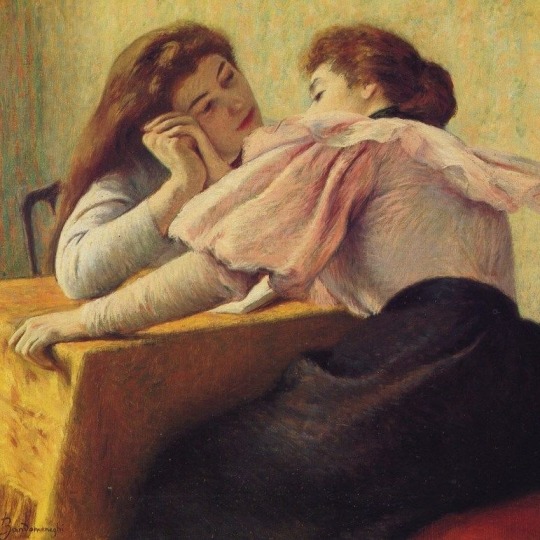Don't wanna be here? Send us removal request.
Text
Tengo que aceptar que ya no estas, que nunca más estarás. Tengo que soltarte. Dejarte ir. No creo que pueda derramar más lagrimas, pero aun así siento que no te he sufrido lo suficiente.
Serás mi karma? O mi venganza?
Solo se que dueles,
Te extraño, y no puedo decírtelo. Porque eres feliz con alguien más.
Que clase de persona arruinaría la felicidad de alguien tan especial?
Solo quiero que dejes de doler.
Tu ganas.
0 notes
Text

vice news
ironically i am working right now so i can’t do a full post on this like i would really prefer to do… but these are the most cartoonishly evil people that you could possibly imagine, even in a society as flawed as the one we’ve built for ourselves. these are bedrock groups devoted to protecting the american worker and consumer. massive huge giant waving red flags 🚩
26K notes
·
View notes
Text



The world isn't in your books and maps. It's out there.
735 notes
·
View notes
Text
reblog to give somebody a fucking hug because we are all struggling to get through it. solidarity in this tough ass world.
132K notes
·
View notes
Text
“I must start to build again after this long period of anguish and despair. […] Keep silent—and have confidence in myself.”
— Albert Camus, from Notebooks 1935-1951; circa March 1936
2K notes
·
View notes
Text
some rather basic tips to writing
Start with an idea: The first step in creating a good storyline is to come up with an idea. This can be anything from a character, a setting, or a plot point that you find interesting.
Develop your characters: Once you have an idea, it's time to start developing your characters. Think about their personalities, motivations, and backstories. This will help you create characters that are relatable and interesting to your readers.
Create a plot: With your characters in mind, it's time to start creating a plot. Think about what your characters want, what obstacles they will face, and how they will overcome them. This will help you create a compelling story that will keep your readers engaged.
Use descriptive language: When writing your story, use descriptive language to help your readers visualize the setting and characters. This will help them become more invested in the story and feel like they are a part of it.
Show, don't tell: Instead of telling your readers what is happening, show them through actions and dialogue. This will help your readers become more engaged in the story and feel like they are experiencing it firsthand.
Use dialogue effectively: Dialogue is an important part of any story, as it helps to reveal character traits and move the plot forward. Use dialogue effectively by making it sound natural and realistic.
Edit and revise: Once you have finished your first draft, it's time to edit and revise. Look for areas where you can improve the story, such as plot holes or weak character development. This will help you create a polished final product that your readers will enjoy.
By following these steps, you can create a good storyline and use effective writing techniques to engage your readers and keep them invested in your story.
972 notes
·
View notes
Text
Some tips for using a few words to describe voices:
1. Tone Words: Use tone words to convey the emotional quality of a voice. For example, you can describe a voice as "melodic," "soothing," "sharp," "gentle," or "commanding" to give readers a sense of the tone.
2. Pitch and Range: Mention the pitch and range of the voice. Is it "deep," "high-pitched," "raspy," or "full-bodied"? This can provide insight into the character's age, gender, or emotional state.
3. Accent and Diction: Describe the character's accent or diction briefly to give a sense of their background or cultural influences. For instance, "British-accented," "Southern drawl," or "formal."
4. Volume: Mention the volume of the voice, whether it's "whispering," "booming," "murmuring," or "hushed."
5. Quality: Use terms like "velvet," "silken," "gravelly," "honeyed," or "crisp" to convey the texture or quality of the voice.
6. Rate of Speech: Describe how fast or slow the character speaks, using words like "rapid," "slurred," "measured," or "rambling."
7. Mood or Emotion: Indicate the mood or emotion carried by the voice. For example, a "quivering" voice may convey fear or anxiety, while a "warm" voice may express comfort and reassurance.
8. Resonance: Describe the resonance of the voice, such as "echoing," "nasal," "booming," or "tinny."
9. Timbre: Mention the timbre of the voice, using words like "rich," "thin," "clear," or "smoky."
10. Cadence: Highlight the rhythm or cadence of speech with descriptors like "staccato," "lilting," "rhythmic," or "halting."
11. Intonation: Convey the character's intonation by saying their voice is "sarcastic," "apologetic," "confident," or "questioning."
12. Vocal Characteristics: If applicable, mention unique vocal characteristics, like a "lisp," "stutter," "drawl," or "accented 'r'."
24K notes
·
View notes
Text
2024 is the year we stop “consuming” and go back to “reading/watching/listening to/playing” things
187K notes
·
View notes
Text








"sorry, theological grandstanding just...really annoys me."
588 notes
·
View notes












